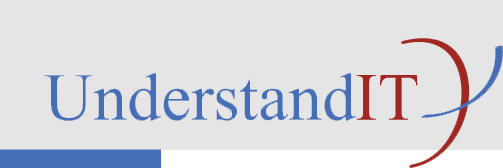Project definition

The UnderstandIT project is a Leonardo da Vinci - Transfer of Innovation project with support from the European Union.
Introduction
The rationale behind the project is that the many VET teachers and tutors still have problems with utilizing ICT in their teaching and creating good learning activities. On the other hand, most of their pupils and students today are digital natives.
The use of ICT by the institutions is not only a question for the teachers, but also a question related to the institutional policy. This is well documented by many sources, for instance by CERC Studies in Comparative Education 23, and published in the book "Pedagogy and ICT use in Schools around the world, findings from the IEA STIES 2006 Study". Norway, Lithuania, Denmark and Italy in the understand IT project, took part in this study. The main question (indicator) in the study was: "To what extent have education systems adopted and implemented objectives that are considered important cornerstones in the Information Society". The study shows that there are significant differences between the participating countries. Our indicators will be:
- What barriers exists and how can we reduce those when VET teachers are going to increase their ICT competence.
- What are the challenges and obstacles on institutional level to change the curriculum to fulfill the requirements from EU,regarding the demand for eSkills (at user level) in the 21st Century.
Secondly, Leonardo da Vinci and other programs have produced many fine results and products, like the Vitae, eTutor Portal and iQTool, that are only known to a very small audience, i.e. mainly among the partners in each project. This problem is well recognized by EU, and in the LLP Guide 2010, chapter 5, on 'Dissemination and Exploitation in the LLP: a structured approach' provides guidelines on how to make a plan for Dissemination and Exploitation for each project. This is described in section D.4.3. In the understand IT project an important aim is not only to spread the results of the afore- mentioned projects to new countries and institutions, but also to develop a Generic Business Model for how to spread results from similar type of projects. The business model is important since it covers the need to take all stakeholders into account, like management, student administration, external user groups, in addition to the VET teachers. Since sharing of results is important, we will also look at and adapt our work to CoP's for teachers. A very good example is D&B (share and use), (http://delogbruk.ning.com/). Another example is the eTutors Portal.
Goals
The main aim of the project is to increase ICT competences among VET teachers, trainers and tutors (Leo-TraInno-3).
The Leonardo project Vitae has developed a pedagogical model of how to teach VET teachers, trainers and tutors new ICT skills. The model is documented in the handbook: "Mentoring For 21st Century Skills, It's all about the Learning".
To take the results from the Vitae project further to new Institutions, new Countries, Cultures and Languages, is an overall goal for the project. To make the model work on a permanent basis, some sub goals are defined:
- What worked and what didn't work, regarding content, pedagogy and technology? Take into account the experiences from the user trials. The aim is to make a revision of the model in the teacher - learner dimension.
- Include all stakeholders like Students (VET teachers, trainers and tutors), Management and Student administration with the aim to evaluate the Vitae model in an institutional setting.
- How will languages and cultures in different Countries influence both the teacher - learner dimension and the institutional implementation?
- Is there a real demand for increased ICT skills among the VET teachers? Are political views and priorities also high on the agenda for the VET teachers and their institutions? Who is willing to pay for the training ( the Government, the Institutions or the teachers themselves?) One aim of the project is to analyze the situation.
- Social media are used extensively by digital natives. Millions of users are present on Facebook, YouTube etc. The use of Web 2.0 technologies is also present in the professional sphere, where people with work related interests are creating and sharing knowledge and experiences. These media are also very strong commercial arenas. The aim is to use Community of Practice (CoP) for VET teachers to create a community among the teachers and link it with the repository of resources found in the eTutors Portal.
- Introducing ICT in VET institutions, teacher training centers etc will change the way they work. One aim in the project will be to raise the awareness of Quality Assurance. For this purpose we will use the results from the Leonardo iQTool project.
- To put all these pieces together and obtaining the aim of creating sustainable activities where the Vitae model is used in many EU Countries, the Concurrent eLearning Design model will be used.
Programme objectives
The UnderstandIT project targets the following from the Lifelong Learning Programme:
- To support participants in training and further training activities in the acquisition and the use of knowledge, skills and qualifications to facilitate personal development, employability and participation in the European labour market (LEO-SpObj-a)
- To support improvements in quality and innovation in vocational education and training systems, institutions and practices (LEO-SpObj-b)
- To improve the quality and to increase the volume of co-operation between institutions or organisations providing learning opportunities, enterprises, social partners and other relevant bodies throughout Europe (LEO-OpObj-2)
- To facilitate the development of innovative practices in the field of vocational education and training other than at tertiary level, and their transfer, including from one participating country to others (LEO-OpObj-3)


 This project has been carried out with the support of the European Community. The content of this project does not necessarily reflect the position of the European Community, nor does it involve any responsibility on the part of the European Community.
This project has been carried out with the support of the European Community. The content of this project does not necessarily reflect the position of the European Community, nor does it involve any responsibility on the part of the European Community.